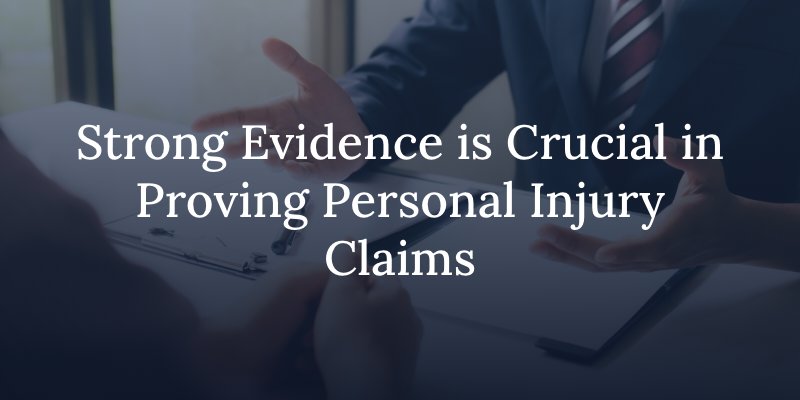The Role of Evidence in Personal Injury Claims
Evidence plays a crucial role in personal injury claims. Successfully proving a personal injury claim typically hinges on the quality and quantity of evidence presented. This blog looks at the types of evidence commonly involved and how they contribute to establishing a claim.
Types of Evidence in Personal Injury Claims
In personal injury claims, various types of evidence are essential to substantiate the claim and establish liability, damages, and causation.
Medical Records
Medical records are essential for proving the extent and nature of the injuries sustained. They include hospital records, doctor’s notes, diagnostic tests, and treatment plans. These records help establish the link between the accident and the injuries, demonstrating the impact on the victim’s health and the necessity of medical treatment.
Photographs and Videos
Visual evidence can vividly illustrate the severity of injuries, the accident scene, and property damage. Photos and videos taken immediately after the incident can be persuasive in showing the conditions and factors contributing to the accident.
Witness Testimonies
Testimonies from eyewitnesses can provide an objective account of the incident. Witnesses can corroborate the claimant’s version of events, clarify details about the accident, and support the claimant’s credibility.
Expert Testimonies
Experts can provide specialized knowledge that the average person may not possess. Medical experts can discuss the extent of injuries and future prognosis, while accident reconstruction experts can explain how the accident occurred and who was at fault.
Police Reports
Official reports by law enforcement can provide a neutral third-party account of the accident. These police reports often include details about the accident, statements from involved parties, and sometimes, the officer’s opinion on fault.
Employment and Income Records
These records may be important for supporting claims related to lost wages or diminished earning capacity. Pay stubs, tax returns, and employer statements can help quantify economic losses resulting from the injury.
Documentation of the Physical and Emotional Impact of Your Injuries
Non-economic damages like pain and suffering can be harder to quantify. Personal journals, testimonies from family and friends, and mental health professional reports can provide insight into the emotional and psychological impact of the injury.

The Role of Evidence in Establishing Key Elements of a Claim
In personal injury claims, establishing key elements – liability, damages, and causation – is essential for a successful outcome. Evidence is the cornerstone of proving these elements.
Proving Liability
Liability refers to the responsibility of the defendant for the plaintiff’s injuries. To establish liability, the plaintiff must prove that the defendant owed a duty of care, breached this duty, and caused the injury.
- Evidence: Accident reports, witness testimonies, and expert analysis are critical in demonstrating how the defendant’s actions led to the accident.
- Objective: Establish that the defendant owed a duty of care, breached this duty, and caused the accident through this breach.
Demonstrating Damages
Damages in personal injury claims refer to the compensation sought by the plaintiff for losses suffered due to the injury. These can be economic (medical bills, lost wages) and non-economic (pain and suffering).
- Evidence: Medical records, employment documents, and pain and suffering documentation are used to substantiate the claimant’s losses.
- Objective: Show the extent of the injuries and the impact on the claimant’s life, both economically and non-economically.
Linking Injuries to the Accident (Causation)
Causation involves proving that the injuries sustained by the plaintiff were a direct result of the defendant’s actions.
- Evidence: Medical expert testimonies and records that show consistent injury patterns and treatment timelines.
- Objective: Connect the injuries directly to the accident, countering any claims that they were pre-existing or unrelated.
Effectively Presenting Evidence Can Play an Important Role in Personal Injury Claims
Claimants must gather comprehensive and convincing evidence to support their claims, establish liability, and demonstrate the extent of their damages. Legal counsel can play a vital role in navigating the complexities of evidence collection and presentation, ensuring that the claimant’s case is as strong as possible.
At Brumley Law Firm, our Seattle personal injury attorneys are committed to advocating for your rights and helping you pursue fair compensation under Washington Law. Our dedicated Seattle personal injury attorneys are committed to advocating for your rights and helping you pursue fair compensation under Washington law. Call (833) 832-2727 or fill out our online form to request a free, no-obligation consultation with one of our experienced attorneys.